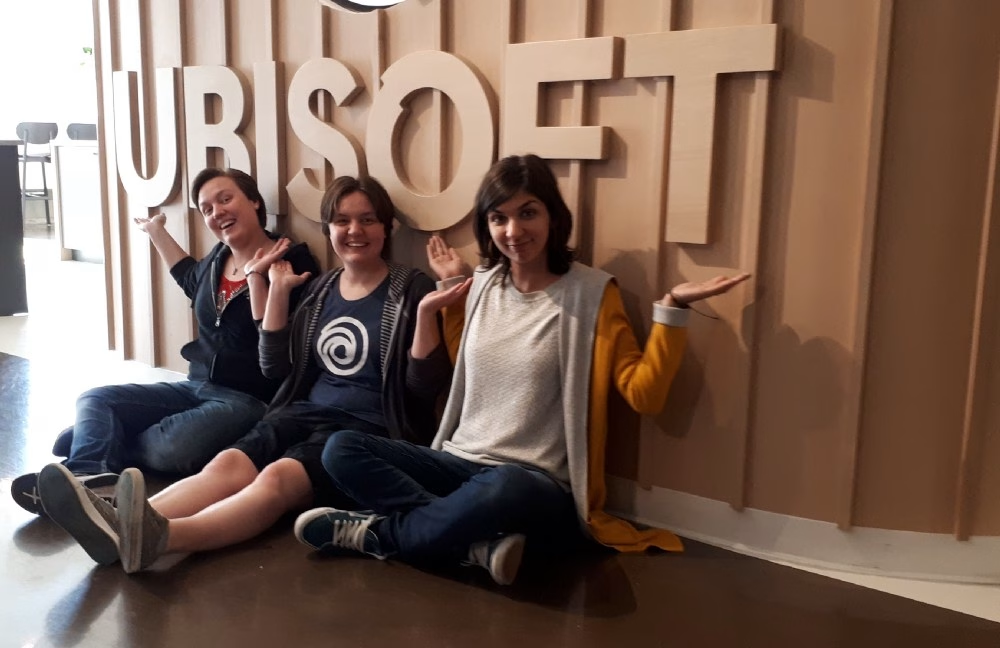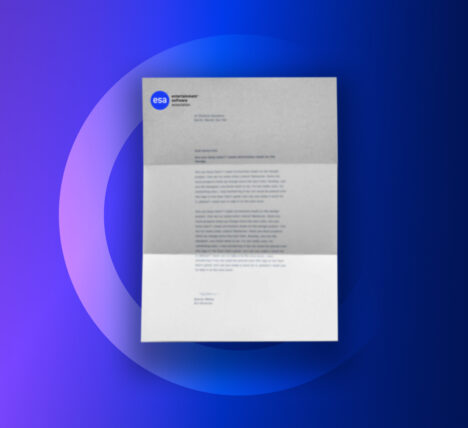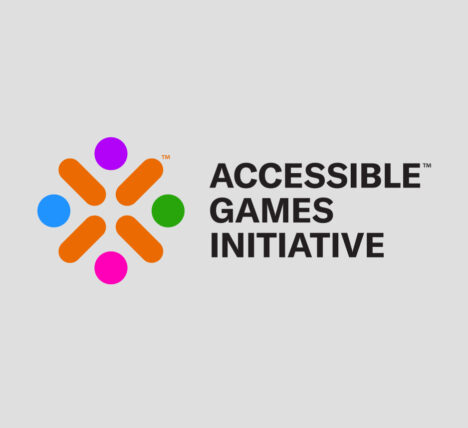When Caitlyn Kenney was an ESA Foundation scholar, she studied abroad in Montreal, where she learned video game-making skills from the pros. Today, she’s an environment artist for Ubisoft.
By Rich Shea
February 6, 2020

If there’s one moment that defines, for Caitlyn Kenney, the joy of working in the video game industry, it’s when the game she’s working on for her employer, Ubisoft Montreal, was recently beta-tested by its employees. Caitlyn, who’s been with the company since last March, can’t divulge exactly what the game is, only that it’s a big production, seeing as Ubisoft is the maker of Assassin’s Creed, Just Dance and Watch Dogs, among other notable titles. But it is the first triple-A game that Caitlyn, an alumna of the ESA Foundation’s scholarship program, has ever worked on.
“They had the whole office play the game, to see what would happen,” she recalls. “And it was really fun — just going around, seeing what everyone was saying and seeing the work put into the game so far. That moment made it feel like a real title to me, instead of just working on little, individual pieces and not seeing the full picture. That was a really good day.”
Caitlyn, at 26, has had a couple really good years. Not long after graduating from Champlain College in Vermont in 2017, with a B.S. in game art and animation, she took a job creating environmental art for an indie studio in Montreal and, in less than a year, was hired as a 3D modeler at Ubisoft. One reason the upstate New York native landed in Montreal — which, as home to 100-plus studios, is considered an industry hub — is she spent a semester her junior year studying there.
“I’m really happy working at Ubisoft. You learn a lot at triple-A studios. There are all these talented, intelligent people working around you.”
“It provided me access to people working in the industry,” she explains. “They’d work their 9-to-5 jobs, then have classes in the evening with us and teach the skills they use at work. So it was a direct link to the industry.”
That “link,” or mentorship, was made possible, in part, by the ESA Foundation, whose funding enabled Caitlyn to cover the extra costs associated with staying in Montreal. A two-time scholarship recipient for her junior and senior years, Caitlyn says the award also served another purpose. “The fact that it was for the video game industry, specifically, and following that career path — it was validation,” she says. “It was, ‘You don’t have to try to become a doctor, a teacher, a lawyer or go to business school.’ It gave worth to the path I chose.”
Being on that path doesn’t, of course, guarantee landing a job, especially at a triple-A company. So how she landed that job — and what she did beforehand — is worth sharing, especially with current students aspiring to do the same.
Caitlyn was born in August of 1993, the third of eight kids, although she just missed being the second. Her twin sister, Gabby, arrived three minutes earlier. Growing up in Chestertown, New York, amid the Adirondack Mountains, they were immersed in nature. No dolls for the Kenney twins. “We played with dinosaurs and had these little tiny plastic bugs, and we played outside,” Caitlyn recalls. “We never played house, and for ‘dress up’ we were heroes and adventurers.”
A sense of adventure led them, at age 7, to start playing video games, first on a Nintendo Entertainment System — games like Mario, Metroid and Battletoads. Then, a couple years later, their grandparents bought them a PlayStation 1, “and we just took off from there,” Caitlyn says.
They also pursued individual passions. Caitlyn, like her mother, liked to draw and paint; Gabby, like their electrical-engineering father, enjoyed tinkering with technology. By the time they were in high school, where a guidance counselor asked, “What do you want to do?” Caitlyn was flummoxed. She knew, she says, that “it’s hard to make living doing traditional art.” Then, one day, while playing Call of Duty: Black Ops, and battling Nazi zombies, “It just dawned on me — ‘Hey, someone has to make this game. It didn’t just materialize out of thin air.’”
So began a career trajectory. Caitlyn and Gabby attended Champlain College, the latter as a computer programming major, and, today, both work at Ubisoft Montreal, Gabby as a gameplay programmer. “No, we don’t live together” is Caitlyn’s answer to the obvious question. “But we’re not far from each other.”
During their sophomore year, a professor told Caitlyn about the ESA Foundation scholarship, and she applied immediately for the 2015–16 school year, noting in her essay that she’d “like to see the visual representation of women in games changed.” No more sidekicks only or damsels in distress. And, she wrote, “when I run into battle, I’m not going to choose the chainmail bikini. As an artist in a game studio I will be able to add input for women and design my own suits of armor.”
While Caitlyn hasn’t reached that point yet, many companies are making an effort, she says, to offer female players better character choices. “The creators,” she adds, “are realizing, ‘Hey, our market is 50 percent women, maybe we should give them some strong role models they’d like to play.’”
“When I run into battle, I’m not going to choose the chainmail bikini. As an artist in a game studio I will be able to add input for women and design my own suits of armor.”
As an environmental artist, Caitlyn also isn’t currently creating characters. Instead, she draws heavily from her childhood days to design minutely detailed natural worlds in which those characters exist. “It’s everything from grass to bushes and trees to vines, also the dirt and rocks — nature stuff,” she says.
In the future, Caitlyn may indeed want to create whole games — perhaps in an indie studio co-founded with Gabby — but right now, “I’m really happy working at Ubisoft,” she says. “It’s been amazing. You learn a lot at triple-A studios. There are all these talented, intelligent people working around you, and you can just lean over and they’ll show you what they’re working on.”
In fact, continuous learning is one of two pieces of advice Caitlyn has for those college students, like the ESA Foundation scholars, aspiring to become game creators. “When you graduate, if you don’t get a job right out of the gate, that’s OK, that’s normal,” she says. “Don’t feel discouraged. But, also, keep learning. You may think you’ve learned all there is to know at college, but there’s so much more. So while you’re trying to get a job, keep learning. It makes you a more valuable candidate to these studios.”
And just as important, she says, “network, network, network. It’s very important to get your name out there, into the industry. Those people you make connections with, they’ll help you along the way.”
The end goal, whether working for an indie or a triple-A company, is to create games, which Caitlyn sees as much more than entertainment. “A lot of games, depending on the genre, have great stories that explore topics that are controversial, the same way a book would,” she says. “But they’re something interactive that you can participate in. Watching a movie or reading a book, you’re stationary, just along for the ride. Whereas with video games, you get to make choices and have discussions.
“They also help form so many communities that bring people together. You can play with someone on the other side of the planet and have so much fun. It’s way more than just entertainment.”
Rich Shea is a freelance writer living in Washington, D.C.




